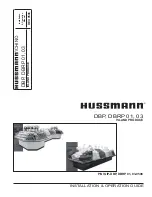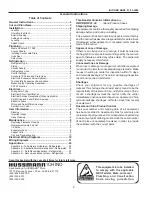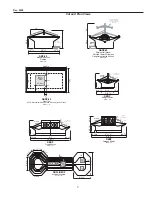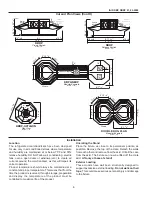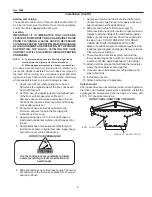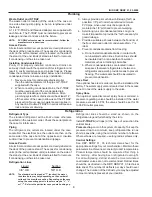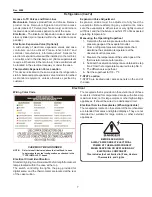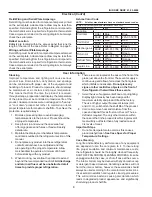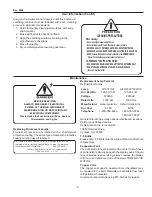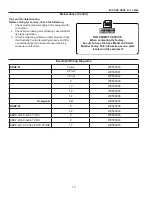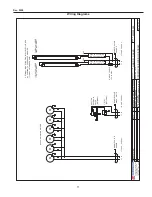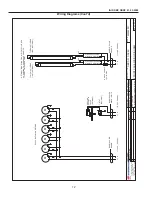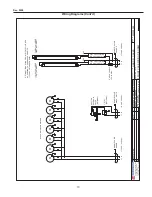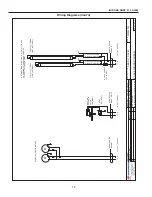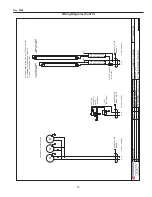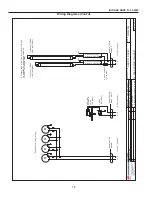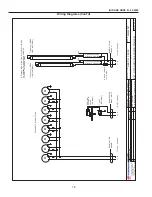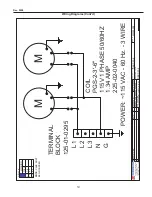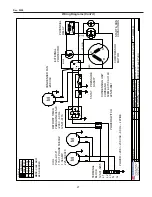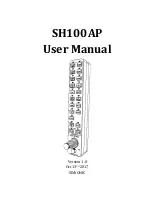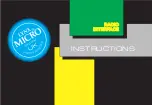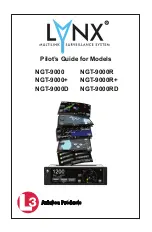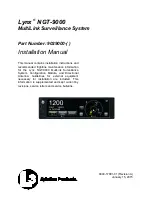
IGIP-DBP, DBRP 01, 03-0508
6
Plumbing
Waste Outlet and P-TRAP
The waste outlet is located off the center of the case on
one side allowing drip piping to be run lengthwise under
the fixture.
A 1-1/” P-TRAP and threaded adapter are supplied with
each fixture. The P-TRAP must be installed to prevent air
leakage and insect entrance into the fixture.
NOTE: PvC-DWv solvent cement is recommended. Follow the
manufacturer’s instructions.
Access Panels
All electrical and drain access panels are clearly labeled on
the deck of the produce stand. The access for condensing
units (in the self contained units) is located on the side of
the stand, at the end. Ends of stand are fitted for removal,
if condensing unit has to be taken out.
Installing Condensate Drain
Poorly or improperly installed condensate drains can
seriously interfere with the operation of this refrigerator, and
result in costly maintenance and product losses. Please
follow the recommendations listed below when installing
condensate drains to insure a proper installation:
1. Never use pipe for condensate drains smaller
than the nominal diameter of the pipe or P-TRAP
supplied with the case.
. When connecting condensate drains, the P-TRAP
must be used as part of the condensate drain
to prevent air leakage or insect entrance. Store
plumbing system floor drains should be at least 14”
off the center of the case to allow use of the P-TRAP
pipe section. Never use two water seals in series in
any one line. Double P-TRAPS in series will cause a
lock and prevent draining.
3. Always provide as much down hill slope (“fall”) as
possible; 1/8” per foot is the preferred minimum.
PVC pipe, when used, must be supported to
maintain the 1/8” pitch and to prevent warping.
4. Avoid long runs of condensate drains. Long runs
make it impossible to provide the “fall” necessary for
good drainage.
5. Provide a suitable air break between the flood rim of
the floor drain and outlet of condensate drain. 1” is
ideal.
6. Prevent condensate drains from freezing:
a. Do not install condensate drains in contact with
non-insulated suction lines. Suction lines should
be insulated with a non absorbent insulation
material such as Armstrong’s Armaflex.
b. Where condensate drains are located in dead
air spaces (between refrigerators or between a
refrigerator and a wall), provide means to prevent
freezing. The water seal should be insulated to
prevent condensation.
Hose Reel
If an optional hose reel is ordered, it will be installed at the
factory. The water supply valve is located next to the access
panel. Connect the water supply to the valve.
Spray Hose
If an optional quick-disconnect spray hose is ordered, a
pressure regulating valve should be installed. If the water
pressure exceeds 45 PSI, the valve should be set for 30
to 35 PSI outlet pressure.
Refrigeration
Refrigerant Type
The standard refrigerant will be R- unless otherwise
specified on the customer order. Check the serial plate on
the case for information.
Piping
The refrigerant line outlets are located under the case.
Locate first the electrical box, the outlets are then on the
same side of the case but at the opposite end. Insulate
suction lines to prevent condensation drippage.
Access Panels
All electrical and drain access panels are clearly labeled on
the deck of the produce stand. The access for condensing
units (in the self contained units) is located on the side of
the stand, at the end. Ends of stand are fitted for removal,
if condensing unit has to be taken out.
Refrigeration Lines
Liquid
Suction
3/8” O.D.
5/8” O.D.
NOTE: The standard coil is piped at
5
/
8
” (suction); however,
the store tie-in may vary depending on the number of
coils and the draw the case has. Depending on the case
setup, the connecting point in the store may be
5
/
8
”,
7
/
8
”,
or 1
1
/
8
”. Refer to the particular case you are hooking up.
Refrigerant lines should be sized as shown on the
refrigeration legend furnished by the store.
Install
P-TRAPS
(oil traps) at the base of all suction line
vertical risers.
Pressure drop
can rob the system of capacity. To keep the
pressure drop to a minimum, keep refrigerant line run as
short as possible, using the minimum number of elbows.
Where elbows are required, use long radius elbows only.
Control Settings
See DBP, DBRP 01, 03 technical data sheet for the
appropriate settings for your merchandiser. Maintain these
parameters to achieve near constant product temperatures.
Product temperature should be measured first thing in
the morning, after having been refrigerated overnight.
For all multiplexing, defrost should be time terminated.
Loadmaster valves are not recommended. Defrost times
should be as directed in the DBP, DBRP 01, 03 technical
data sheet. The number of defrosts per day should never
change. The duration of the defrost cycle may be adjusted
to meet conditions present at your location.

